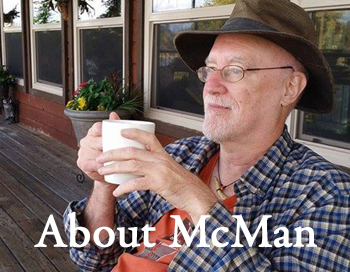
Mood
 DEPRESSION PLUS
DEPRESSION PLUS

There is a lot more to your depression than just depression.
by John McManamy

There is a lot more to your depression than just depression.
by John McManamy
LET'S BRIEFLY review:
In my first article on depression - What Is It? - I challenged the DSM symptom check-list view of depression. The check-list merely validates what you already know - that you are feeling "depressed." But what is depression?
My second article - Figuring Out Depression - attempted to answer this question by asking us to examine our emotions, our mental activity, our physical activity, and our behavior - too much or too little, high or low, over or under. Are you showing too much emotion, for instance (such as sadness or anger), or are you emotionally numb? Chances are your multitude of symptoms will cluster toward one of two broad types - vegetative or agitated. This is hardly a perfect distinction, but we do have a rough guide.
My third article - Placing Depression in Context - asks us to look at the bigger picture. Depression doesn't happen in a vacuum. Yes, it is a biological illness (most likely many different illnesses) affecting the brain, but there is situational and environmental stuff going on around it and interacting with it. Moreover, there is our inner psyche to contend with.
In this article - the fourth and final one in this series - we zero in on areas where depression spills over into bipolar, anxiety, psychosis, and personality (and vice-versa). Let's get started ...
Depression - Unipolar or Bipolar?
"Unipolar" is the term used to distinguish clinical depression - major depressive disorder - from a depressive episode in "bipolar" disordr.
Before making the diagnosis of depression, the American Psychiatric Association in its Depression Treatment Guidelines mandates that clinicians specifically rule out the diagnosis of bipolar disorder. Individuals with bipolar typically seek help when they are depressed, with little or no recall of their wacky and wild moments. Bipolar depression may resemble clinical depression on the surface, but there is no room for margin of error, as an antidepressant administered to someone with bipolar is likely to make their condition far worse (such as inducing mania or speeding up cycling).
Generally, individuals with bipolar depressions present with a preponderance of vegetative symptoms. A vegetative depression may well be unipolar, but a careful clinician will poke around for evidence of a past manic or hypomanic episode. Unfortunately, this kind of evidence too often eludes even careful clinicians. Misdiagnosis tends to be a fact of life.
When in doubt, a clinician would be advised to default to the bipolar diagnosis, or at least treat the depression as if it were bipolar. This would be in keeping with medicine's first principle of "do no harm."
Depression - Recurrent or Chronic?
The DSM separates out recurrent depression (depression that comes and goes) from chronic depression (that persists for over two years). Taking the DSM literally, two episodes of "chronic" depression would technically constitute recurrent depression. Fortunately, this absurdity can be overlooked. What cannot be dismissed, however, is the fact that the DSM pays no attention to the relationship between recurrent depression and bipolar disorder.
SIGN UP FOR MY FREE EMAIL NEWSLETTER
Closely spaced depressions - highly recurrent ones - may have more in common with bipolar disorder than major depressive disorder. Indeed, the old view of manic-depression included both bipolar and recurrent depression. The DSM-III and its successors messed this up badly.
An individual with recurrent depression may not have bipolar, but unipolar hardly describes this patient either. This individual may not experience mania, but the pattern of successive depressions interspersed with "well" states (or at least less severely depressed states) points to evidence of a bipolar-like cycle. An antidepressant may turn this so-called unipolar patient into a bipolar patient fast.
Depression - Pure or Mixed - Manic?
Mania and hypomania (mania lite) feature in the "up" phase of bipolar, but its symptoms (such as racing thoughts) are not necessarily exclusive to the illness.
The DSM-5 introduced a "mixed features" specifier that includes at least three mania symptoms (such as "increase in energy or goal directed activity"). Emil Kraepelin, who coined the term manic-depression, detailed various mixed states in his classic 1921 "Manic-Depressive Insanity." Ninety years later, the DSM is finally getting with the program.
As with recurrent depression, once again we find ourselves in the diagnostic overlap between depression and bipolar. A depression with mixed mania features may be difficult, if not impossible, to distinguish from a mania or hypomania with mixed depression features, and it probably doesn't matter.
We are talking about agitated or energized depressions on one hand and dysphoric (rather than euphoric) manias and hypomanias on the other. But in either case, there is an intense feeling of psychic unease, of wanting to crawl out of one's skin. Before I got my drivers license, I used to joke that I got road rage a lot - and didn't even drive.
Depression - Pure or Mixed - Anxious?
Agitated depressions are a tell-tale sign that there is more going on with depression than just depression (such as mixed mania features). Almost certainly, there will be signs of anxiety. Likewise, any depression fueled by stressful events is likely to have anxiety as a component.
Nearly 60 percent of those with depression experience full-blown anxiety, and just about everyone with depression has enough anxiety symptoms to make some kind of clinical difference. The DSM-5 finally got around to recognizing this, with the debut of the new diagnosis, "mixed anxiety/depression."
A DSM mixed anxiety/depression would involve at least three symptoms of major depression plus "anxious distress" involving "irrational worry, preoccupation with unpleasant worries, having trouble relaxing, motor tension, fear that something awful may happen."
One may quibble with the fine points of this new diagnosis, but the basic message comes through loud and clear: Where you find depression, look for signs of anxiety.
Psychotic Depression
Psychosis is a condition that cuts across at least four illnesses, including schizophrenia, schizoaffective, bipolar, and depression. In addition, psychosis is a stand-alone condition. Moreover, a good many individuals may manifest features of psychosis without experiencing the condition full-on. Psychosis, which may include hallucinations and hearing voices, typically involves delusional thinking at best only marginally connected to reality.
Keep in mind that depression already involves gross distortions in thinking, including thoughts of guilt and worthlessness and hopelessness. In this context, psychosis may be regarded as distorted thinking writ large. The DSM cites examples of "mood congruent" features, including holding oneself responsible for the death of a loved one or deserving to be punished for some moral transgression or personal inadequacy. One can also experience delusions of illness or poverty.
Less common are "mood incongruent" features that may include delusions of persecution and the belief that one's thoughts aren't one's own.
"Major depressive disorder with psychotic features" is the official DSM terminology.
Depressive Temperament
By making a depressive "episode" the defining feature of major depressive disorder, the DSM assumes that depression is an interloper not connected to our baseline personality. But the ancient DSMs I and II viewed depression as a far more complex animal, with personality in play.
The ancient Greeks described the "four humors" (or temperaments) that included melancholy (literally "black bile"). The others can be loosely translated into cheerful, laid-back, and grouchy. Throw a few others into the mix, such as high-strung, and we're talking about the basic components of personality, heritable traits that influence (but not necessarily govern) our thoughts and feelings and behavior.
An individual with a depressive temperament is not mentally ill. To the contrary, a lot of deep thinking may be going on. But a clinical depression laid over a depressive personality is going to represent a very heavy rock to push uphill. On the other side of the coin, a depressive episode laid over a cheerful personality is likely to manifest as an agitated or mixed depression. This interplay between "affective temperament" and mood disorders is a very new field. Robert Cloninger of Washington University (St Louis) and Hagop Akiskal of UCSD have done some outstanding pioneering work, but we need an army of deep-thinkers on the case. Calling all depressives.
One last point: A successful treatment outcome will look a lot different between the two contrasting temperaments. The cheerful person will return to his or her bubbly self; the depressive person will go back to thinking deep.
Further Personality Complications
The current DSM-5 lists a plethora of personality disorders. A number of individuals with mood disorders also have co-occurring personality disorders, but we all have personality issues. "Woe is me," may be typical for someone caught up in the throes of depression, but in an overly fearful individual the "woe" is amplified. In someone who is overly self-centered, the "me" volume gets turned up. In either case, "woe is me" is more difficult to contend with.
Wrapping Up Depression
There is always something more going on with depression than mere depression, and these add-ons invariably complicate its course and treatment. Compounding matters are issues related to gender and age and the seasons and a host of other factors. We pick up on these new themes and build on old ones in other articles in this section. Additionally, you can continue your explorations in the Behavior, Treatment, and Recovery sections. Also check out the articles in the Issues, Stories, Famous, and Science sections for further layers of insight.
By now, I trust that you understand that depression is a highly complex condition that demands ruthless inquiry into everything going on inside you and around you. There are no easy answers, only lots of hard questions. As long as you're asking, there is hope. Keep asking, live well ...
This article is the last in a four-part series. Previous articles: What Is It?* Figuring Out Depression * Placing Depression in Context
Reviewed June 16, 2016
NEW!
Follow me on the road. Check out my New Heart, New Start blog.












